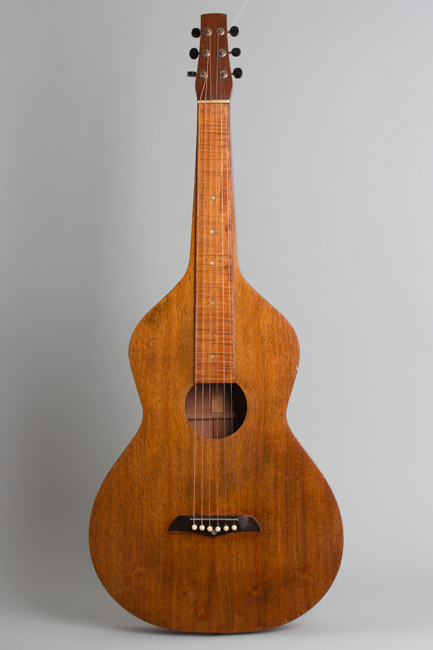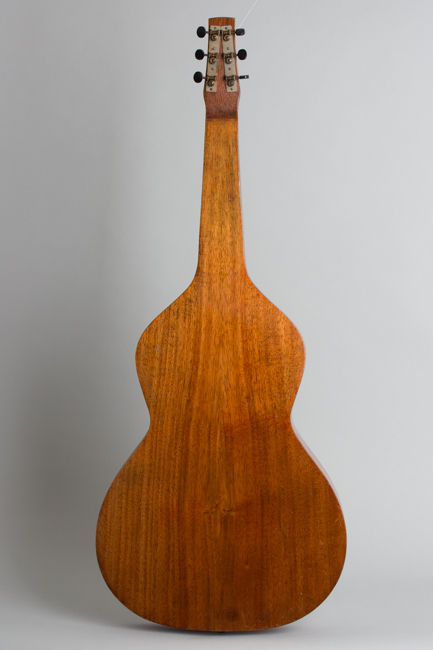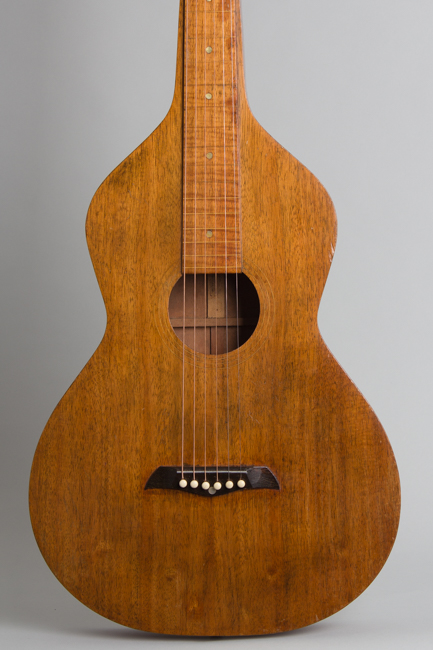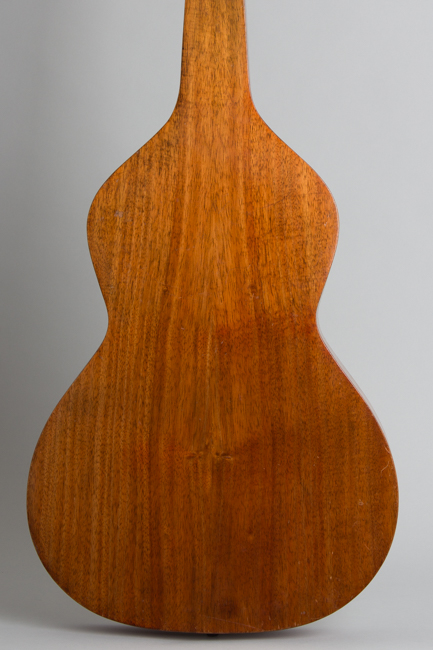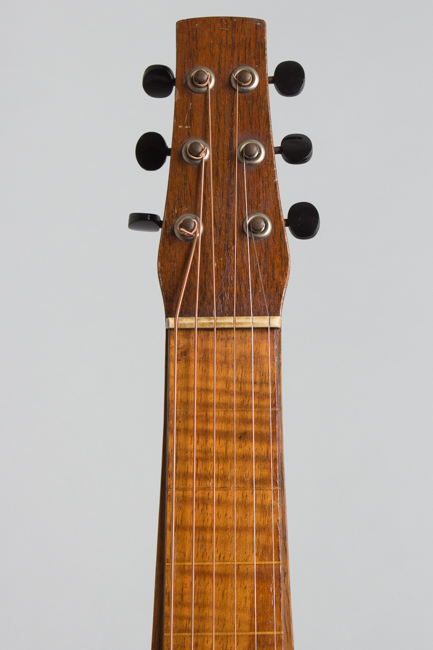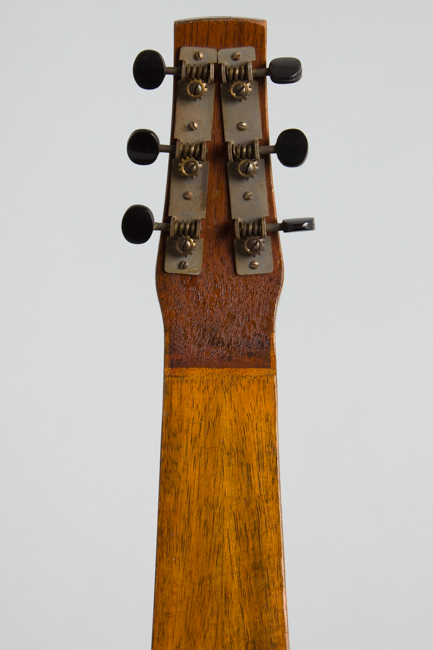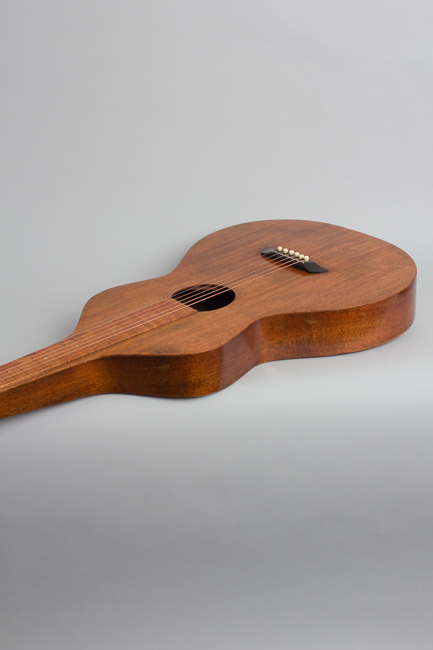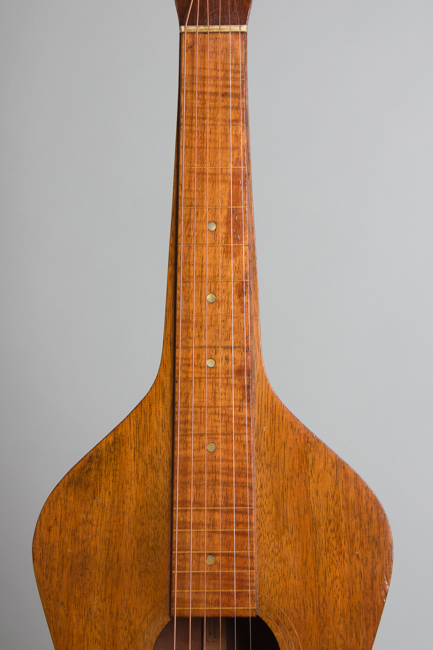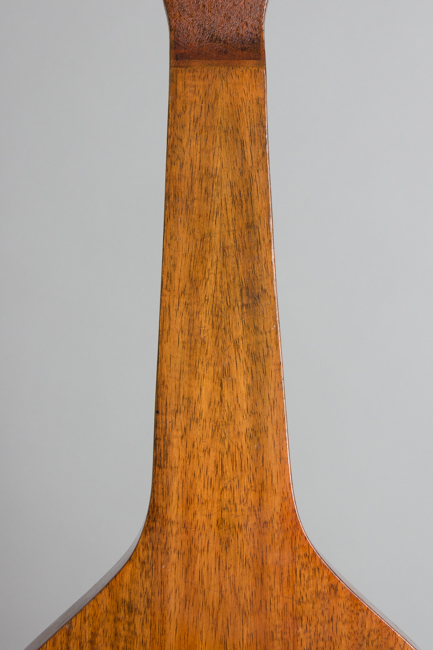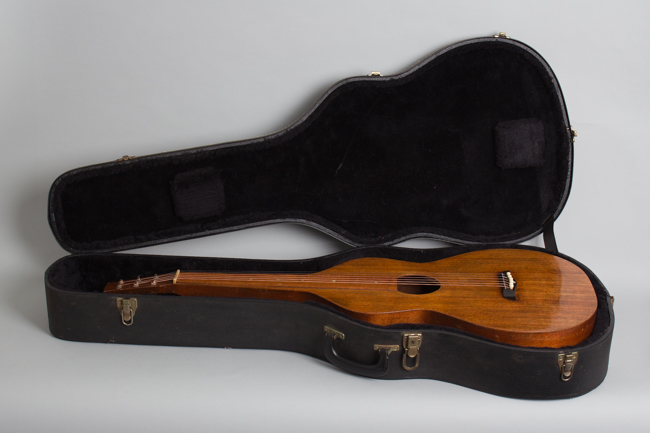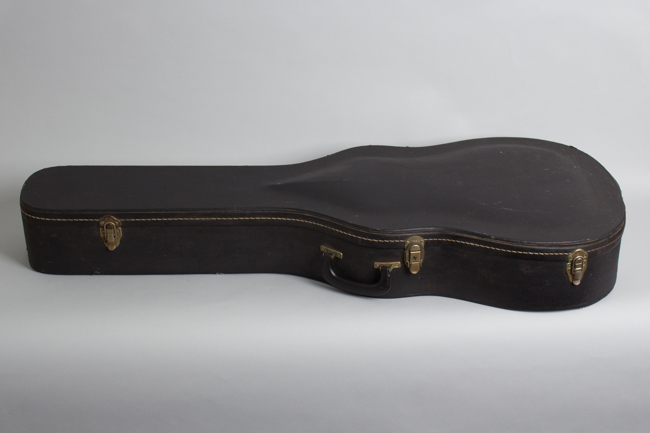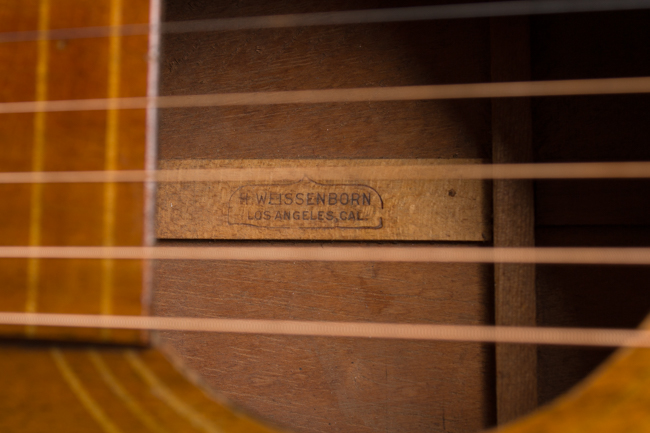Weissenborn Style 1 Hawaiian Acoustic Guitar , c. 1932
This item has been sold.
Item # 12740
Prices subject to change without notice.
Weissenborn Style 1 Model Hawaiian Acoustic Guitar, c. 1932, made in Los Angeles, natural lacquer finish, koa wood body and fingerboard, black tolex hard shell case.
One of the 1910s and '20s most distinctive and unusual instruments, Weissenborn Hawaiian guitars are fully dedicated to lap-style slide playing with an integral fully hollow square neck. This makes for a unique instrument in both looks and sound, a classic of its type. The Hawaiian steel guitar first became popular in the continental US during the mid 1910s. In particular Los Angeles saw a boom in interest in the early 1910's, fueled by the city's proximity to Hawaii and musicians traveling there. Local teachers including Hawaiian-style pioneer C. S. Delano realized it would be a smart idea to have special instruments for sale to students, and a local boom was on.
At the same time the incredibly creative, if highly eccentric, Seattle luthier Chris Knutsen was experimenting with Hawaiian harp guitars and a 'convertible' guitar which could be played in either Spanish or Hawaiian style. Knutsen soon moved down the coast to Los Angeles and also designed the prototypes for this hollow-neck Hawaiian instrument. Despite his creative genius, Knutsen's craftsmanship was eccentric at best and he never got involved in quantity production, so his designs are now mostly remembered as built by others.
Herman Weissenborn is the name is now primarily associated with these thin-body hollow-neck Hawaiian guitars. Weissenborn's products bear either his stamp or the "Kona" brand C.S. DeLano used although the actual designer of both was Chris Knutsen. In the early 1920s Weissenborn organized a large workshop in Los Angeles especially for the production of these instruments. The Weissenborn Hawaiian guitar has a relatively shallow flat-topped body with a fully hollow neck giving an almost ghostly, airy sound. The official style designations were cataloged as 1-4, depending on the level of decoration. This Style 1 is the plainest of the lot, with no trim on the body and a simple soundhole ring pattern; the beauty of the amber-finished Koa wood is the major visual element. This one has a fairly plain body but a nicely flamed fingerboard with pearl dot inlay. The sound is the same for all, the price varied depending on the cosmetics.
This Style 1 has the stylistic hallmarks of a later Weissenborn-made instrument, with no label but the Weissenborn stamp on the back strip. The very slim headstock mounts typical depression era strip tuners, dating the guitar to the early 1930s. The bridge is smaller and the Koa top braced more heavily than 1910s and early '20s examples with a somewhat larger bridgeplate, helping this Style 1 survive in excellent structural condition compared to many earlier examples. Whoever originally bought this one it didn't get a lot of use, and has come down to us in a very well-preserved state sounding fantastic.
Overall length is 37 1/2 in. (95.2 cm.), 15 1/4 in. (38.7 cm.) wide at lower bout, and 2 15/16 in. (7.5 cm.) in depth at side, taken at the end block. Scale length is 24 3/4 in. (629 mm.). Width of nut is 1 7/8 in. (48 mm.).
This is a very clean and solid Weissenborn, all original and really one of the nicest we have seen in a long time. The finish shows fine checking overall but only very light wear, with small dings, chips and scuffs most notably to the headstock edges. The top on original Weissenborns is often the sore point; this later example solider than most, with minimal distortion. Internally all the bracing is original and undisturbed. The endpin was once drilled out for a pickup and has now been restored. This is a transcendently beautiful sounding guitar, ready for another century housed in a later HSC. Overall Excellent Condition.
One of the 1910s and '20s most distinctive and unusual instruments, Weissenborn Hawaiian guitars are fully dedicated to lap-style slide playing with an integral fully hollow square neck. This makes for a unique instrument in both looks and sound, a classic of its type. The Hawaiian steel guitar first became popular in the continental US during the mid 1910s. In particular Los Angeles saw a boom in interest in the early 1910's, fueled by the city's proximity to Hawaii and musicians traveling there. Local teachers including Hawaiian-style pioneer C. S. Delano realized it would be a smart idea to have special instruments for sale to students, and a local boom was on.
At the same time the incredibly creative, if highly eccentric, Seattle luthier Chris Knutsen was experimenting with Hawaiian harp guitars and a 'convertible' guitar which could be played in either Spanish or Hawaiian style. Knutsen soon moved down the coast to Los Angeles and also designed the prototypes for this hollow-neck Hawaiian instrument. Despite his creative genius, Knutsen's craftsmanship was eccentric at best and he never got involved in quantity production, so his designs are now mostly remembered as built by others.
Herman Weissenborn is the name is now primarily associated with these thin-body hollow-neck Hawaiian guitars. Weissenborn's products bear either his stamp or the "Kona" brand C.S. DeLano used although the actual designer of both was Chris Knutsen. In the early 1920s Weissenborn organized a large workshop in Los Angeles especially for the production of these instruments. The Weissenborn Hawaiian guitar has a relatively shallow flat-topped body with a fully hollow neck giving an almost ghostly, airy sound. The official style designations were cataloged as 1-4, depending on the level of decoration. This Style 1 is the plainest of the lot, with no trim on the body and a simple soundhole ring pattern; the beauty of the amber-finished Koa wood is the major visual element. This one has a fairly plain body but a nicely flamed fingerboard with pearl dot inlay. The sound is the same for all, the price varied depending on the cosmetics.
This Style 1 has the stylistic hallmarks of a later Weissenborn-made instrument, with no label but the Weissenborn stamp on the back strip. The very slim headstock mounts typical depression era strip tuners, dating the guitar to the early 1930s. The bridge is smaller and the Koa top braced more heavily than 1910s and early '20s examples with a somewhat larger bridgeplate, helping this Style 1 survive in excellent structural condition compared to many earlier examples. Whoever originally bought this one it didn't get a lot of use, and has come down to us in a very well-preserved state sounding fantastic.
Overall length is 37 1/2 in. (95.2 cm.), 15 1/4 in. (38.7 cm.) wide at lower bout, and 2 15/16 in. (7.5 cm.) in depth at side, taken at the end block. Scale length is 24 3/4 in. (629 mm.). Width of nut is 1 7/8 in. (48 mm.).
This is a very clean and solid Weissenborn, all original and really one of the nicest we have seen in a long time. The finish shows fine checking overall but only very light wear, with small dings, chips and scuffs most notably to the headstock edges. The top on original Weissenborns is often the sore point; this later example solider than most, with minimal distortion. Internally all the bracing is original and undisturbed. The endpin was once drilled out for a pickup and has now been restored. This is a transcendently beautiful sounding guitar, ready for another century housed in a later HSC. Overall Excellent Condition.
